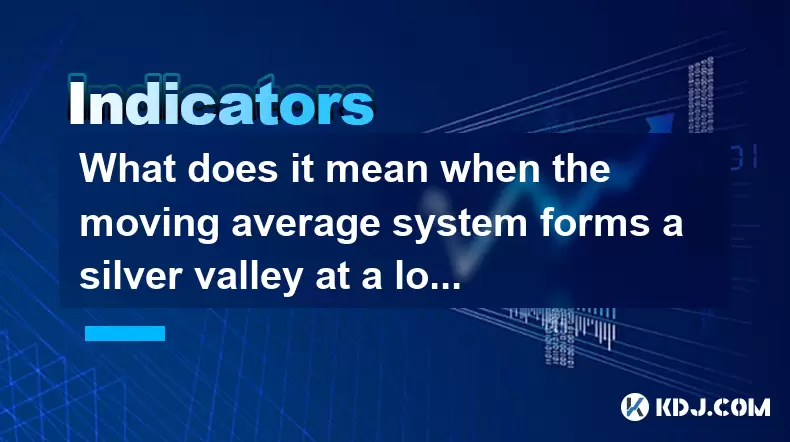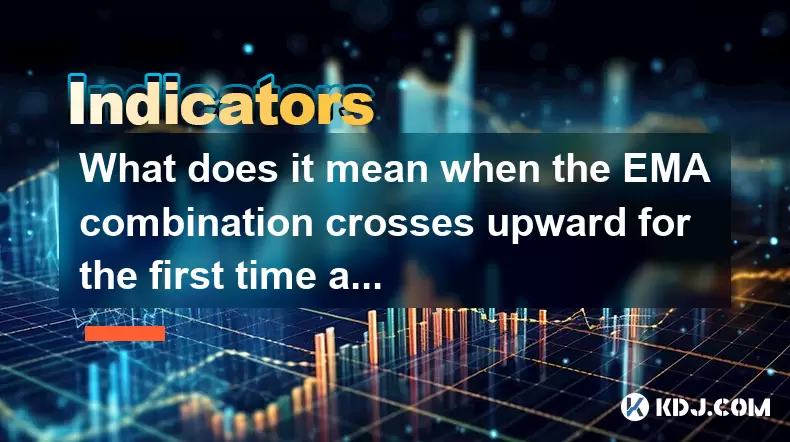-
 Bitcoin
Bitcoin $118600
0.36% -
 Ethereum
Ethereum $3855
1.06% -
 XRP
XRP $3.195
-0.09% -
 Tether USDt
Tether USDt $1.000
-0.04% -
 BNB
BNB $844.5
6.23% -
 Solana
Solana $191.3
2.83% -
 USDC
USDC $0.9997
-0.01% -
 Dogecoin
Dogecoin $0.2376
0.10% -
 TRON
TRON $0.3242
0.83% -
 Cardano
Cardano $0.8222
0.13% -
 Hyperliquid
Hyperliquid $45.26
6.53% -
 Sui
Sui $4.200
-2.56% -
 Stellar
Stellar $0.4336
-1.24% -
 Chainlink
Chainlink $18.86
0.28% -
 Hedera
Hedera $0.2796
-1.75% -
 Bitcoin Cash
Bitcoin Cash $583.3
-1.84% -
 Avalanche
Avalanche $27.06
8.09% -
 Litecoin
Litecoin $112.3
-1.16% -
 Toncoin
Toncoin $3.353
0.58% -
 UNUS SED LEO
UNUS SED LEO $8.968
-0.11% -
 Shiba Inu
Shiba Inu $0.00001395
-0.54% -
 Ethena USDe
Ethena USDe $1.001
-0.03% -
 Uniswap
Uniswap $10.76
0.69% -
 Polkadot
Polkadot $4.175
0.26% -
 Monero
Monero $326.7
1.07% -
 Bitget Token
Bitget Token $4.665
1.61% -
 Dai
Dai $0.9998
-0.02% -
 Pepe
Pepe $0.00001271
0.32% -
 Cronos
Cronos $0.1416
2.01% -
 Aave
Aave $299.3
1.15%
What does it mean when the moving average system forms a silver valley at a low level?
The silver valley formation in crypto trading signals a potential bullish reversal when short- and medium-term EMAs converge after a downtrend and then show an upward crossover with rising volume.
Jul 28, 2025 at 09:56 am

Understanding the Moving Average System in Cryptocurrency Trading
The moving average (MA) is a foundational technical indicator used extensively in cryptocurrency trading to smooth out price data over a specified time period. Traders rely on moving averages to identify trends, determine support and resistance levels, and generate buy or sell signals. The most common types are the Simple Moving Average (SMA) and the Exponential Moving Average (EMA), with the latter placing more weight on recent prices. When multiple moving averages are used together—such as the 50-day and 200-day MA—they form a moving average system that helps traders interpret market momentum.
A key function of the moving average system is to filter out market noise, especially in the highly volatile crypto markets. When prices are fluctuating wildly, moving averages provide a clearer picture of the underlying trend. A crossover—where a shorter-term MA crosses above or below a longer-term MA—is one of the most watched events. However, more complex formations like the silver valley carry deeper implications, particularly when they appear after a prolonged downtrend.
What Is the Silver Valley Formation?
The silver valley is a bullish reversal pattern that occurs within a moving average system. It forms when a short-term moving average (e.g., 10-day EMA) dips below a medium-term moving average (e.g., 30-day EMA), then both decline in parallel for a period, creating a narrow "valley" between them. After this consolidation phase, the short-term MA turns upward and crosses back above the medium-term MA, signaling a potential shift from bearish to bullish momentum.
This formation is called a "silver valley" because the two moving averages appear to form a V-shaped trough—like a valley—where the convergence and subsequent separation resemble a glint of silver. The significance increases when this occurs at a low level, meaning the price has already experienced a substantial decline and may be nearing oversold conditions. In cryptocurrency markets, where sentiment can shift rapidly, such patterns are closely monitored for early reversal signals.
Interpreting the Silver Valley at a Low Level
When the silver valley forms at a low level, it suggests that selling pressure is diminishing and buyers may be stepping in. The narrowing gap between the moving averages indicates decreasing volatility and a potential stabilization of price. The subsequent upward crossover of the short-term MA over the medium-term MA confirms that short-term momentum is turning positive.
In the context of cryptocurrencies like Bitcoin or Ethereum, a silver valley at a low level often follows a capitulation phase where weak holders have sold off their positions. The formation implies that the asset may have found a temporary bottom. Traders watch for increasing volume during the upward crossover to validate the strength of the reversal. Without volume confirmation, the signal may be considered weak or prone to failure.
How to Identify a Silver Valley: Step-by-Step Guide
- Open a cryptocurrency trading chart on a platform such as TradingView or Binance
- Apply two exponential moving averages: a short-term (e.g., 10-period EMA) and a medium-term (e.g., 30-period EMA)
- Observe the price action after a sustained downtrend
- Look for the 10-period EMA to cross below the 30-period EMA, then both move downward in close proximity
- Confirm that the distance between the two MAs narrows, forming a tight "valley"
- Wait for the 10-period EMA to turn upward and cross back above the 30-period EMA
- Check for rising trading volume during the upward crossover to increase confidence in the signal
It’s crucial to use daily or 4-hour charts for more reliable signals, as lower timeframes can generate false patterns due to market noise. Also, consider combining this with RSI (Relative Strength Index) readings below 30 to confirm the asset is oversold, reinforcing the validity of the low-level silver valley.
Practical Trading Strategy Using the Silver Valley
Traders can use the silver valley as part of a tactical entry strategy. Once the pattern is confirmed, a long position may be initiated. To manage risk, a stop-loss can be placed just below the recent price low that formed during the valley phase. For example, if Bitcoin formed a low at $26,000 during the valley, setting a stop-loss at $25,500 helps limit downside exposure.
Take-profit levels can be based on previous resistance zones or Fibonacci extension levels. A common approach is to target a move equal to the depth of the prior downtrend. If the price fell from $35,000 to $26,000 (a $9,000 drop), a reasonable target might be $35,000 again, especially if broader market conditions support a bullish trend.
Some traders use a pyramiding technique, adding to their position as the price continues to rise and the moving averages begin to expand upward, indicating strengthening momentum. This method allows for maximizing gains while maintaining disciplined risk control.
Common Misinterpretations and Pitfalls
Not every convergence of moving averages constitutes a valid silver valley. A frequent mistake is mistaking a simple MA crossover for the full valley formation. The parallel decline phase is essential—the two averages must move downward in close alignment before the reversal. Without this, the signal lacks the consolidation component that gives the pattern its strength.
Another pitfall is acting on the signal without confirming volume. In low-volume environments, especially during weekends or holidays in the crypto market, false breakouts are common. Additionally, external factors such as regulatory news or macroeconomic events can override technical patterns, leading to unexpected reversals.
Using the silver valley in isolation is risky. It should be combined with other indicators like MACD, support levels, or on-chain data (e.g., exchange outflows) to increase the probability of a successful trade. For instance, if large amounts of Bitcoin are moving off exchanges while the silver valley forms, it may indicate accumulation by strong hands, adding credibility to the bullish signal.
Frequently Asked Questions
What is the difference between a silver valley and a golden cross?
The golden cross occurs when a short-term MA crosses above a long-term MA (e.g., 50-day above 200-day) after a downtrend, signaling a major bullish shift. The silver valley involves a short-term and medium-term MA forming a tight downward channel before reversing, and it typically appears earlier in the recovery phase, offering a potentially earlier entry point.
Can the silver valley appear in sideways markets?
Yes, but its reliability decreases. In ranging markets, moving averages often cross back and forth, creating false signals. The silver valley is most effective when it forms after a clear downtrend and at price levels where historical support exists.
Which cryptocurrencies respond best to moving average patterns like the silver valley?
Highly liquid cryptocurrencies such as Bitcoin (BTC), Ethereum (ETH), and Binance Coin (BNB) tend to exhibit clearer technical patterns due to stronger market participation and lower manipulation risk. Lower-cap altcoins may show erratic MA behavior due to low volume and high volatility.
Should I use EMA or SMA for detecting a silver valley?
EMA is preferred because it reacts faster to recent price changes, making it more sensitive to shifts in momentum. SMA may lag too much, causing delayed signals that reduce profitability in fast-moving crypto markets.
Disclaimer:info@kdj.com
The information provided is not trading advice. kdj.com does not assume any responsibility for any investments made based on the information provided in this article. Cryptocurrencies are highly volatile and it is highly recommended that you invest with caution after thorough research!
If you believe that the content used on this website infringes your copyright, please contact us immediately (info@kdj.com) and we will delete it promptly.
- Elon Musk, SpaceX, and Bitcoin: A $153 Million Mystery
- 2025-07-28 22:30:12
- Ozak AI: Is This Crypto Gem Primed for a 2025 Takeoff?
- 2025-07-28 22:30:12
- Anchorage Digital & Ethena Labs: Ushering in a New Era of Stablecoins with GENIUS Compliance
- 2025-07-28 20:50:13
- Altcoins Soar, Bitcoin Stumbles: Decoding the Crypto Inflows Shift
- 2025-07-28 20:50:13
- XRP, Pi Coin, Ethereum: Decoding the Latest Crypto Trends
- 2025-07-28 21:30:12
- Meme Coin Mania: SPX6900's Surge and TOKEN6900's Potential Explosion
- 2025-07-28 21:30:12
Related knowledge

What does it mean when the EMA combination crosses upward for the first time after sideways trading?
Jul 28,2025 at 03:43pm
Understanding the EMA and Its Role in Technical AnalysisThe Exponential Moving Average (EMA) is a widely used technical indicator in cryptocurrency tr...

What signal does the ROC send when it rises rapidly from a low level and breaks through the zero axis?
Jul 27,2025 at 10:15am
Understanding the Rate of Change (ROC) IndicatorThe Rate of Change (ROC) is a momentum-based oscillator used in technical analysis to measure the perc...

What does it mean when the price breaks through the double bottom neckline and the moving averages are arranged in a bullish pattern?
Jul 28,2025 at 10:57am
Understanding the Double Bottom PatternThe double bottom is a widely recognized reversal chart pattern in technical analysis, particularly within the ...

What signal does the DMA fast line cross the slow line above the zero axis?
Jul 28,2025 at 05:42am
Understanding the DMA Indicator and Its ComponentsThe DMA (Difference of Moving Averages) indicator is a technical analysis tool used in cryptocurrenc...

What does it mean that the rebound is blocked after the moving average is arranged in a short position for the first time?
Jul 26,2025 at 10:51am
Understanding the Short-Term Moving Average ConfigurationWhen traders refer to a 'short position arrangement' in moving averages, they are describing ...

What does it mean that the ZIGZAG low point is raised and the high point breaks through the previous peak?
Jul 28,2025 at 03:28am
Understanding the ZIGZAG Indicator in Cryptocurrency TradingThe ZIGZAG indicator is a technical analysis tool widely used in cryptocurrency trading to...

What does it mean when the EMA combination crosses upward for the first time after sideways trading?
Jul 28,2025 at 03:43pm
Understanding the EMA and Its Role in Technical AnalysisThe Exponential Moving Average (EMA) is a widely used technical indicator in cryptocurrency tr...

What signal does the ROC send when it rises rapidly from a low level and breaks through the zero axis?
Jul 27,2025 at 10:15am
Understanding the Rate of Change (ROC) IndicatorThe Rate of Change (ROC) is a momentum-based oscillator used in technical analysis to measure the perc...

What does it mean when the price breaks through the double bottom neckline and the moving averages are arranged in a bullish pattern?
Jul 28,2025 at 10:57am
Understanding the Double Bottom PatternThe double bottom is a widely recognized reversal chart pattern in technical analysis, particularly within the ...

What signal does the DMA fast line cross the slow line above the zero axis?
Jul 28,2025 at 05:42am
Understanding the DMA Indicator and Its ComponentsThe DMA (Difference of Moving Averages) indicator is a technical analysis tool used in cryptocurrenc...

What does it mean that the rebound is blocked after the moving average is arranged in a short position for the first time?
Jul 26,2025 at 10:51am
Understanding the Short-Term Moving Average ConfigurationWhen traders refer to a 'short position arrangement' in moving averages, they are describing ...

What does it mean that the ZIGZAG low point is raised and the high point breaks through the previous peak?
Jul 28,2025 at 03:28am
Understanding the ZIGZAG Indicator in Cryptocurrency TradingThe ZIGZAG indicator is a technical analysis tool widely used in cryptocurrency trading to...
See all articles

























































































